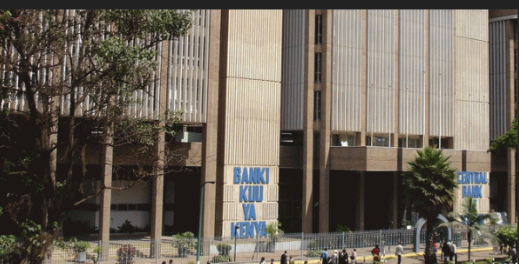The market expects a 0.5% or more cut in the benchmark lending rate from the Monetary Policy Committee (MPC) meeting next week following recent economic data.
- The easing inflation closer to the lower bound target and the stable shilling coupled with the easing cycle globally is likely to weigh on the MPC’s decision on 8th October.
- The Central Bank of Kenya (CBK), cut the central bank rate (CBR) by 0.25% in August to 12.75% after a series of hikes since the onset of the global pandemic.
- The prevailing high interest rates has shrinked credit demand and spurred the growth of non-performing loans to record highs for the banking sector.
“There is no compelling case against a higher rate cut.” Stellar Swakei, Senior Research Associate at Standard Investment Bank noted while speaking to the Kenyan Wall Street.
“We anticipate at least a 50 bps rate cut, driven by global trends and the need to stimulate economic growth. With inflation now well below the midpoint, there is ample room for a meaningful rate cut. On the other hand, the exchange rate has remained stable in recent weeks, and short-term external debt repayment pressures are minimal,so this trend should continue,” she added.
The prevailing high interest rates has shrinked credit demand and spurred the growth of non-performing loans to record highs for the banking sector. Commercial banks lending rates have remained high in the period, making it expensive. The growing credit appetite by the government from domestic borrowing is however likely to pose headwinds to the easing stances by the apex bank.
“In the financial sector, non-performing loans are worryingly high, and credit remains prohibitively expensive, making capital inaccessible for businesses and individuals. Additionally, it is essential to continue reducing rates on government securities, as the burden of costly domestic debt continues to weigh on the country’s revenues.” Stellar added.
On Wednesday, Treasury Cabinet Secretary John Mbadi urged the Central Bank of Kenya (CBK) to start lowering its lending rate, holding that inflation is now under control.
“We think now that the central bank should start lowering the interest rate so that we encourage the private sector to take up more loans, and create job opportunities,” Mr Mbadi told lawmakers on Wednesday.
In the August MPC meeting, the committee said it will closely monitor “the impact of the policy measures as well as developments in the global and domestic economy and stands ready to take further action as necessary in line with its mandate.”
Central Bank Rate is the interest rate at which the CBK charges domestic banks to borrow money.
Global Developments Likely to Shape MPC’s Decision
In September, the Federal Reserve delivered a 0.5% cut in its benchmark rate, marking the beginning of an easing cycle since the onset of the global pandemic. The Fed pointed out that inflation was moderating and the labor market was weakening according to data, prompting the half a percentage point cut.
The US had maintained its rate steady at 5.25%-5.5% since July 2023 holding that they were assessing the totality of incoming economic data until they gained greater confidence that inflation is moving towards their target sustainably.
The European Central Bank delivered a 0.25% rate cut – the 2nd rate cut in 2024 – on the back of cooling inflation falling below the 2% target, and sluggish economic growth across the euro zone.
Central banks in Europe, England, Canada and some emerging markets including Kenya had already started cutting their benchmark rates months before the Fed. While the Fed might not be the trend setters in the easing cycle, they still play a vital role in the direction setting.
“When America coughs, the whole world catches a cold,” – Fed decisions have spillover effects to the world economies because they tend to impact foreign exchange markets since they affect the value of the US Dollar as the global reserve currency.
For emerging markets, most of their debt is in US dollar, changes in interest rates by the Fed boils down to changes in debt servicing costs.
However, economies including Nigeria, Japan, Turkey and Brazil are countering the easing trend with higher interest rates to tame inflationary pressures.



